The second half
Aarhus University Research Foundation (AUFF) has just sold the chemical factory Cheminova to the American chemical group FMC Corporation for DKK 8.5 billion. Cheminova is located on the Rønland peninsula in the middle of a ten kilometre-long sandbar between the Limfjord and the North Sea in north-west Jutland. Many of the local residents have protested about the sale. Some are protesting in order to obtain some financial help from the research foundation both for the employees at the chemical manufacturing plant and towards business development in the area. Others are fighting for clarification of who is now responsible for the contamination around Cheminova if the American owners decide to move or close the chemical manufacturing plant in the future.
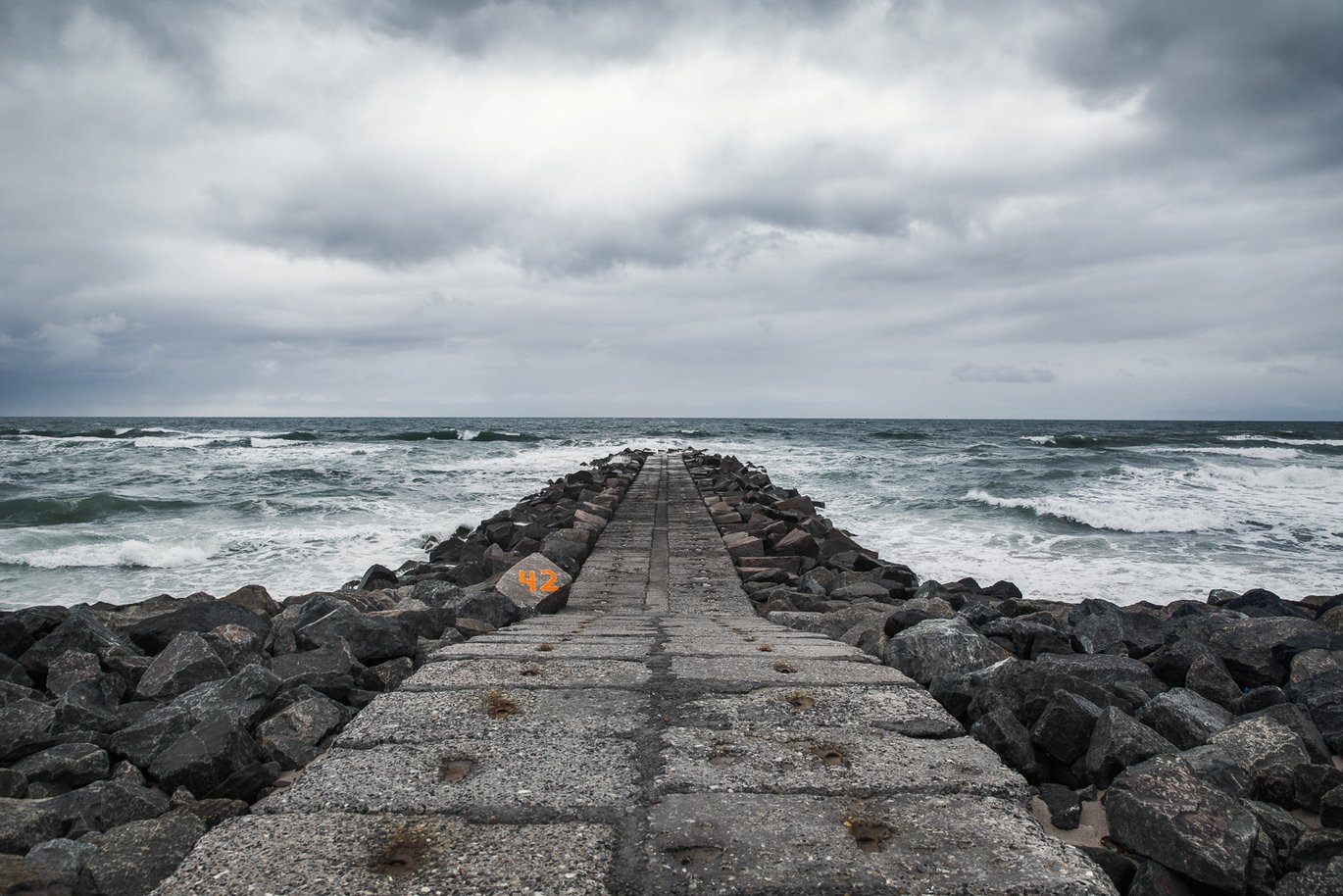
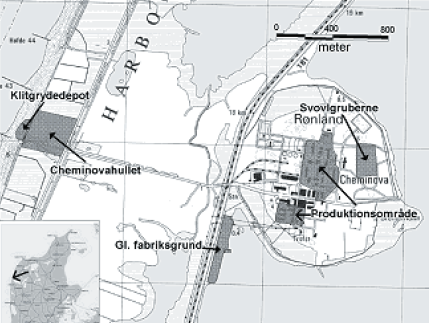

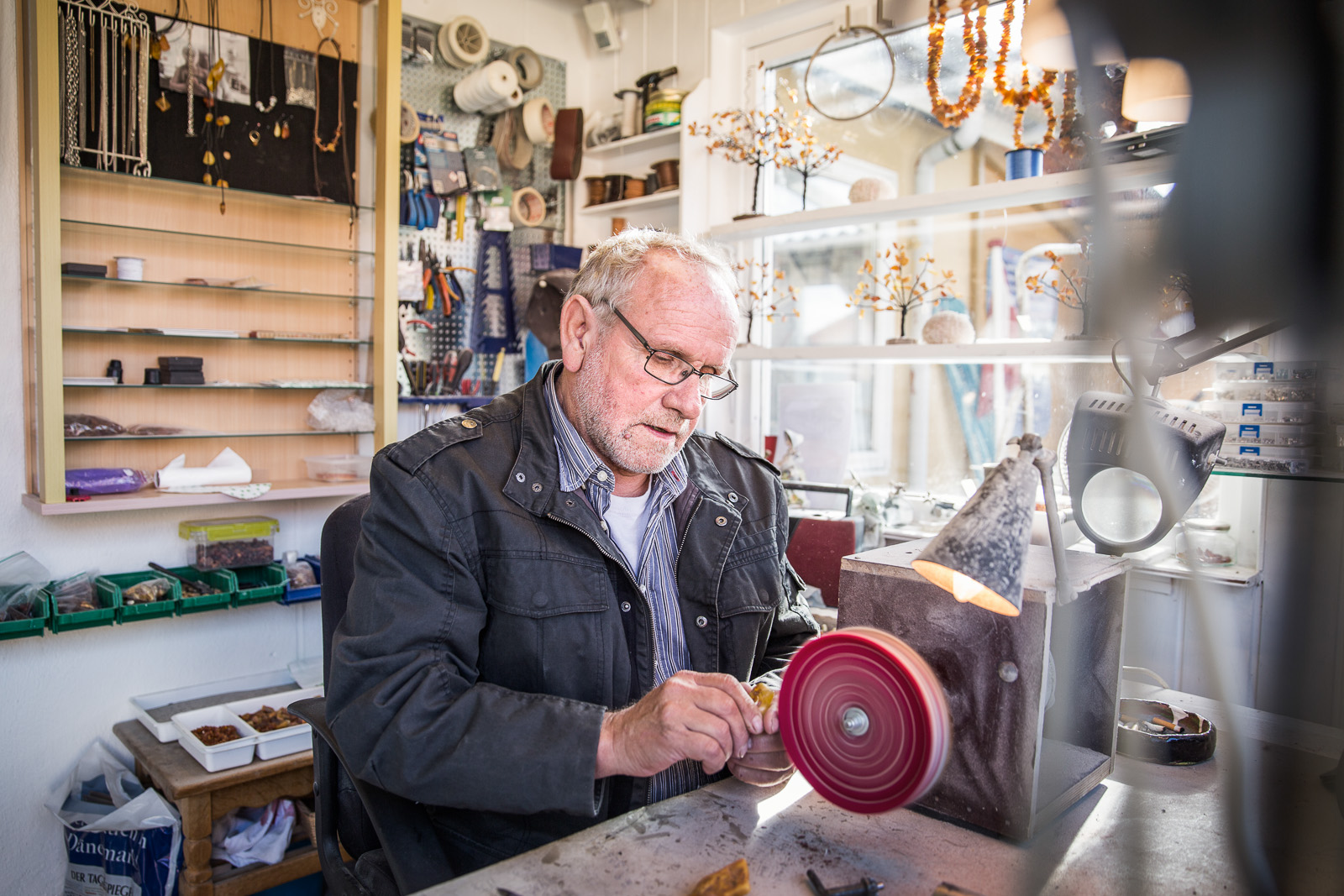
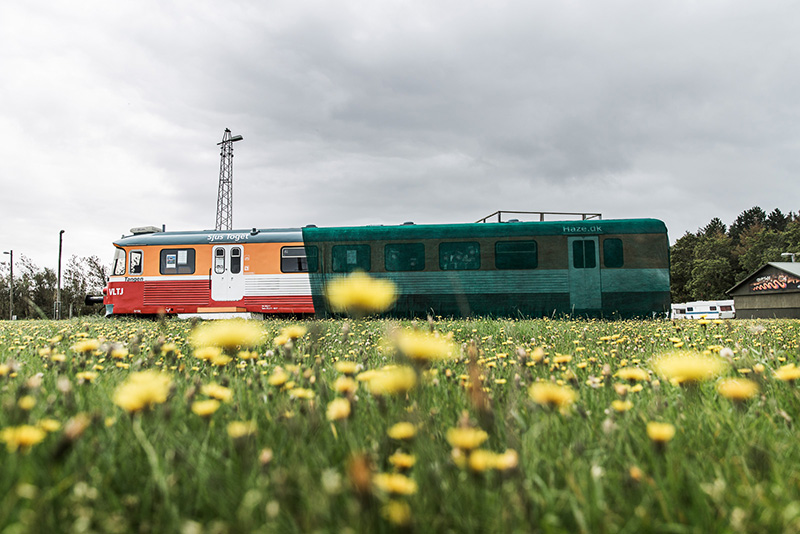
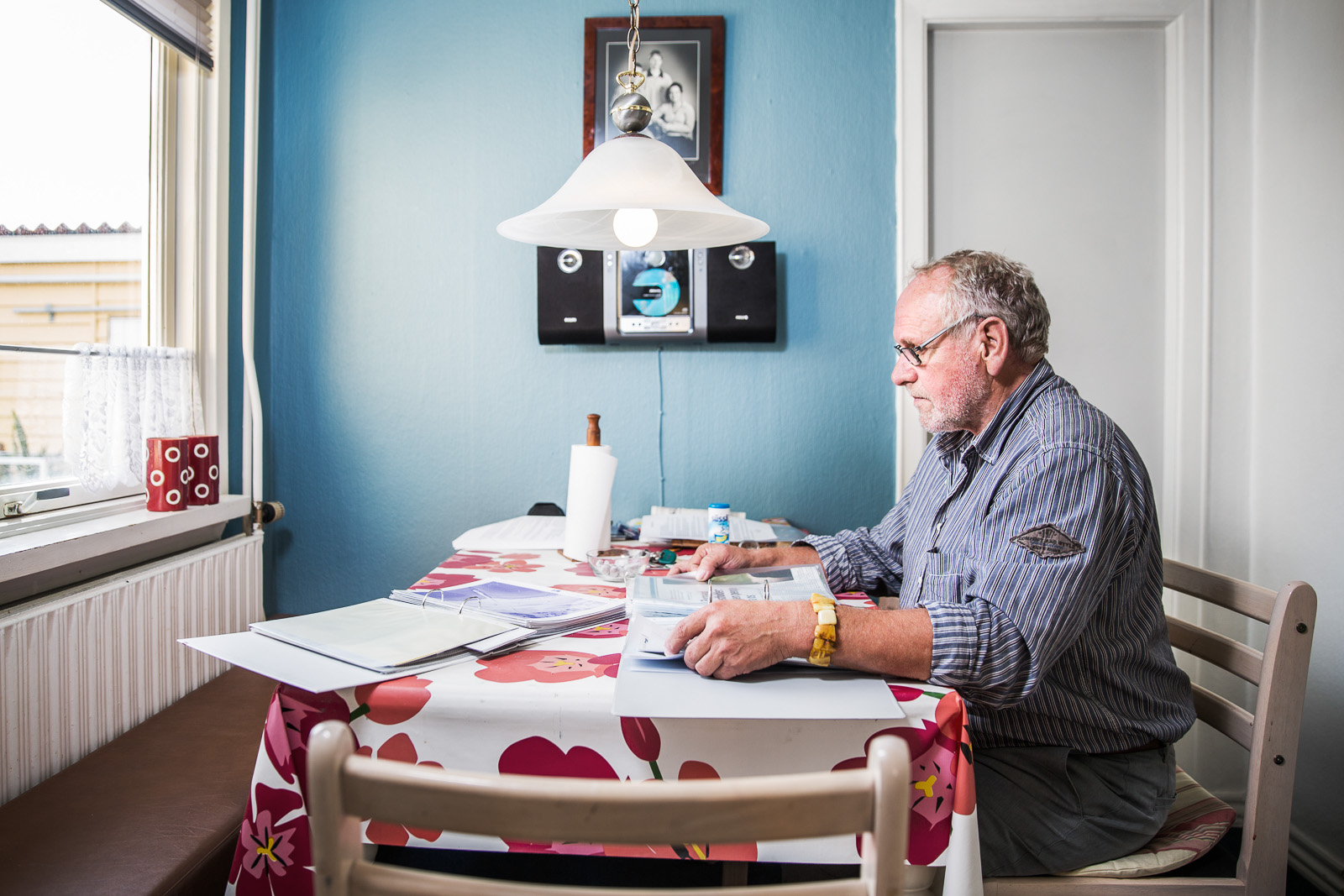

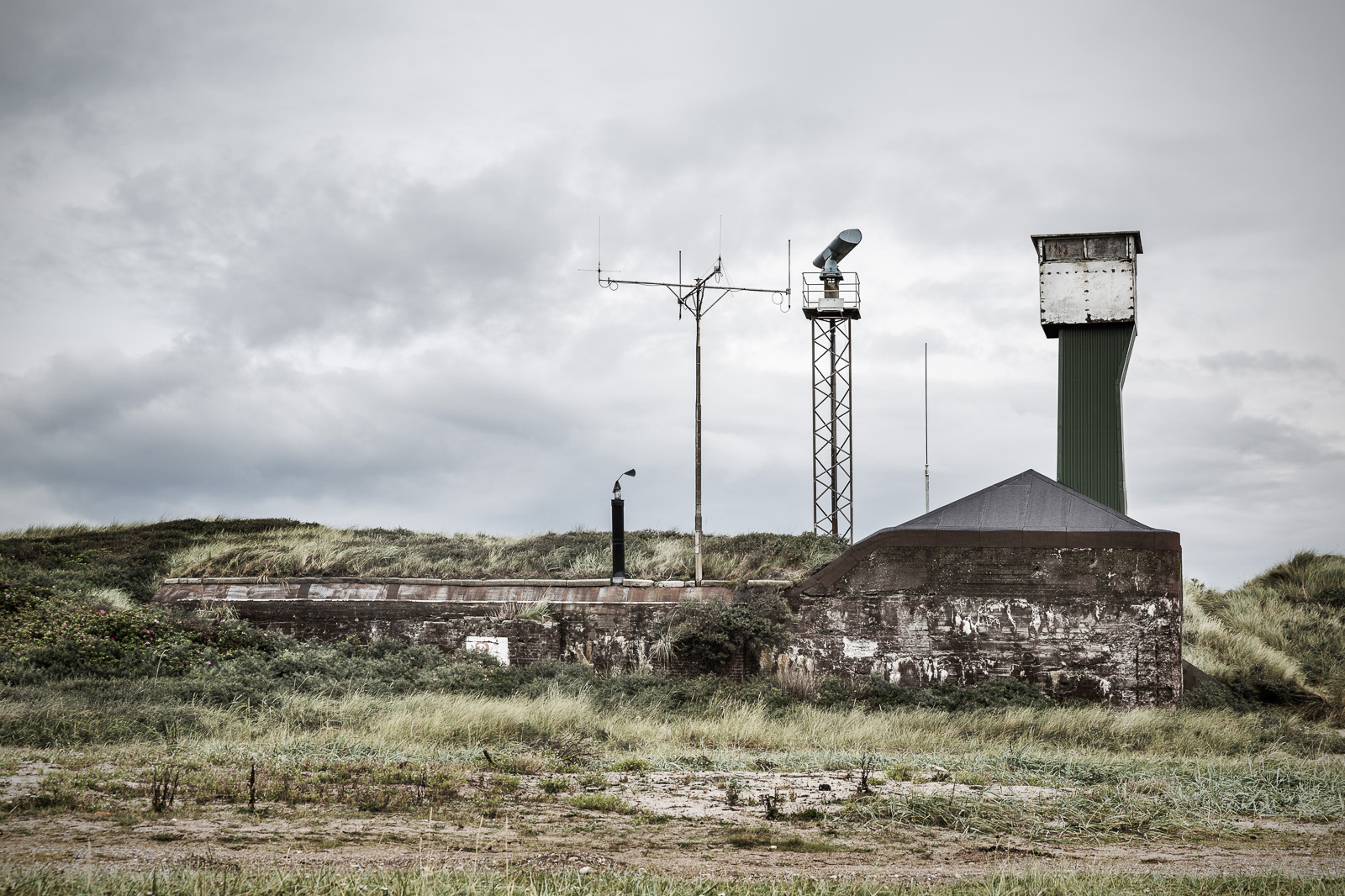
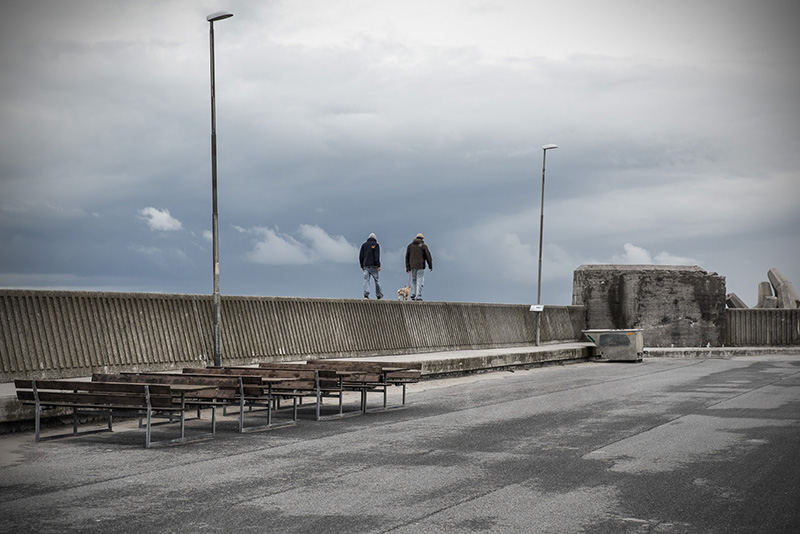
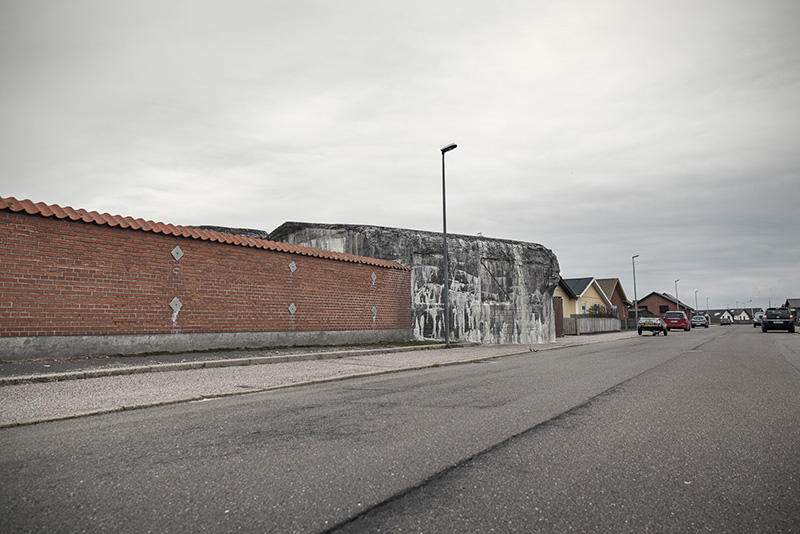
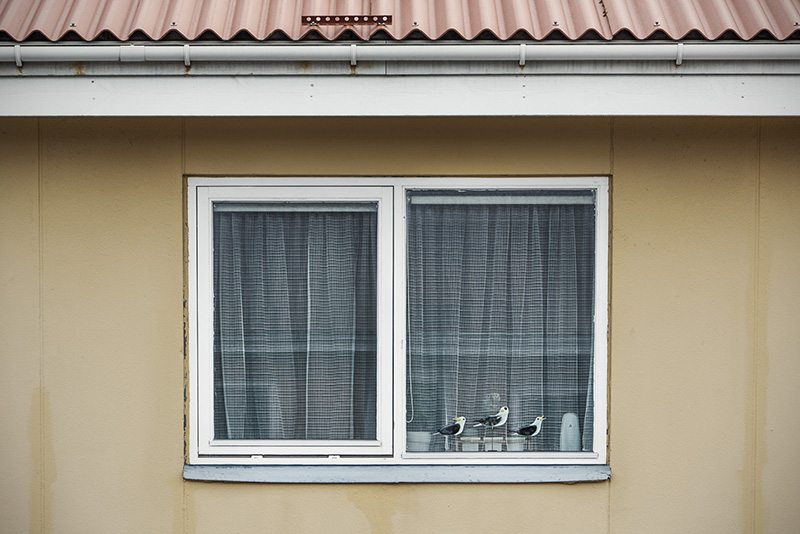
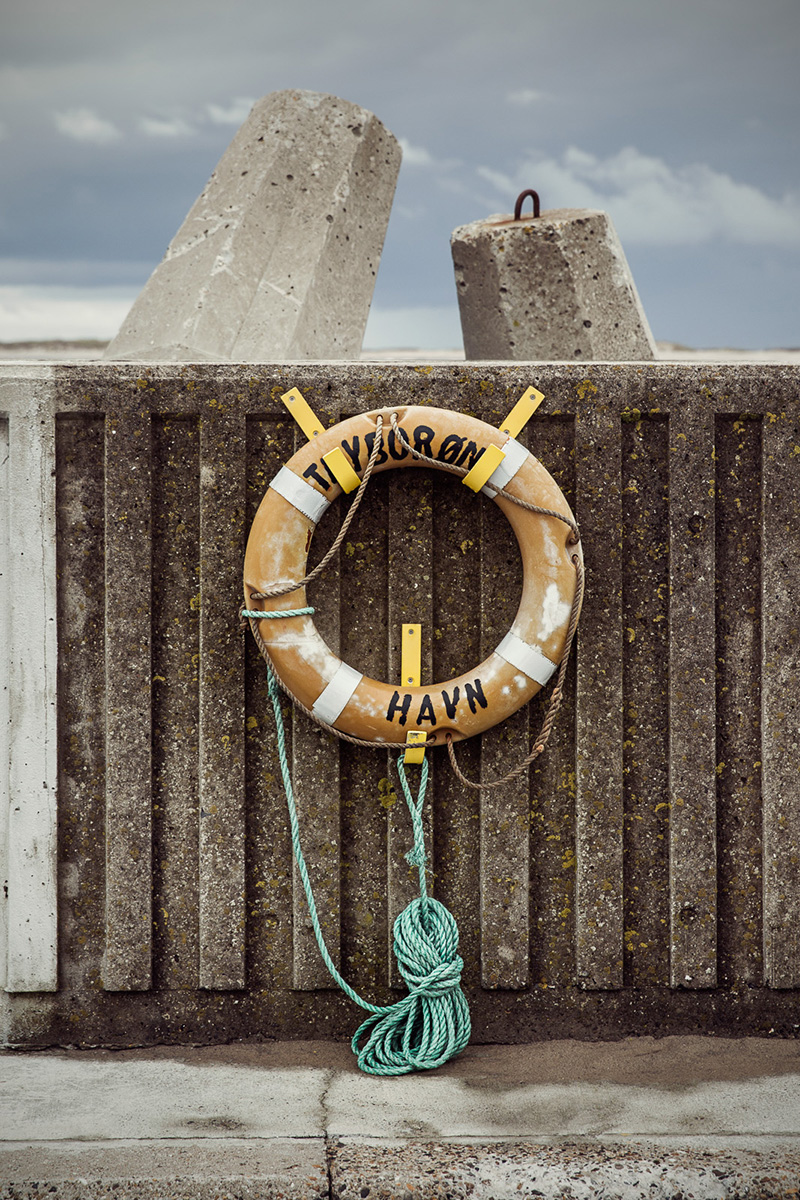
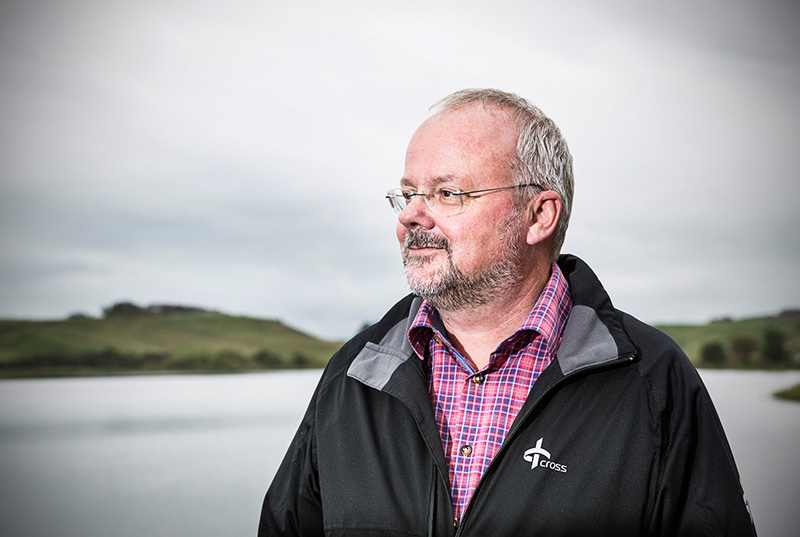
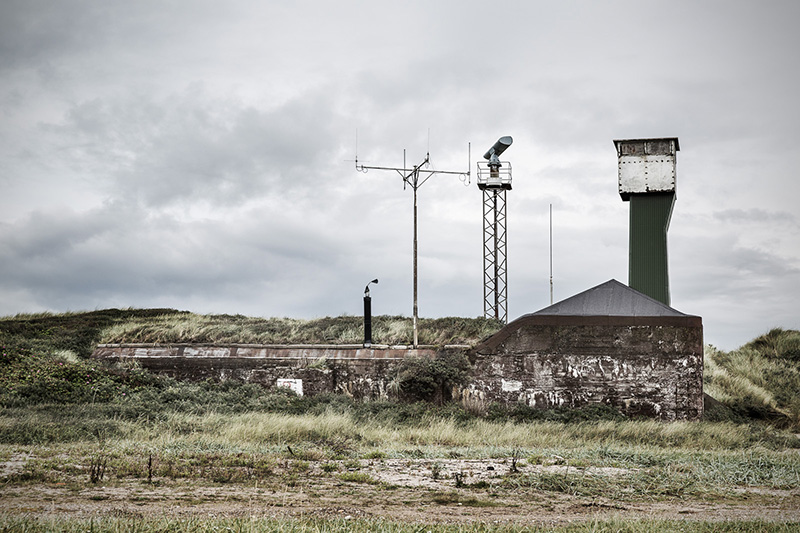
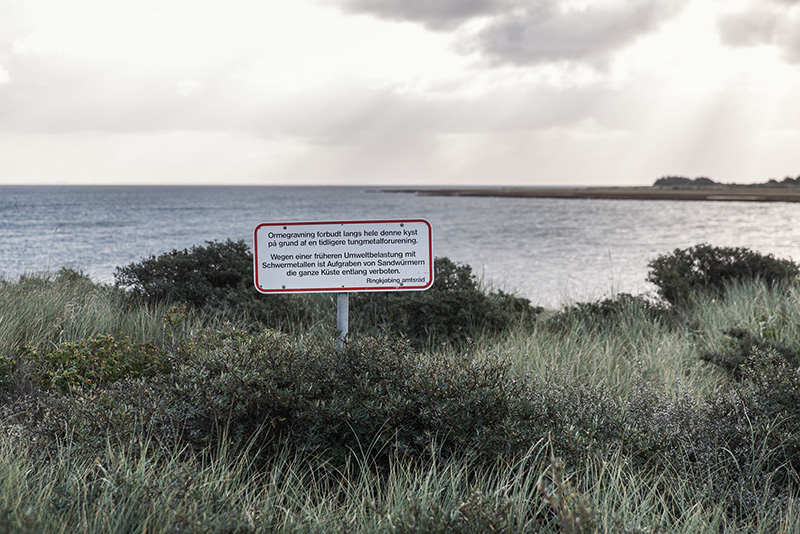
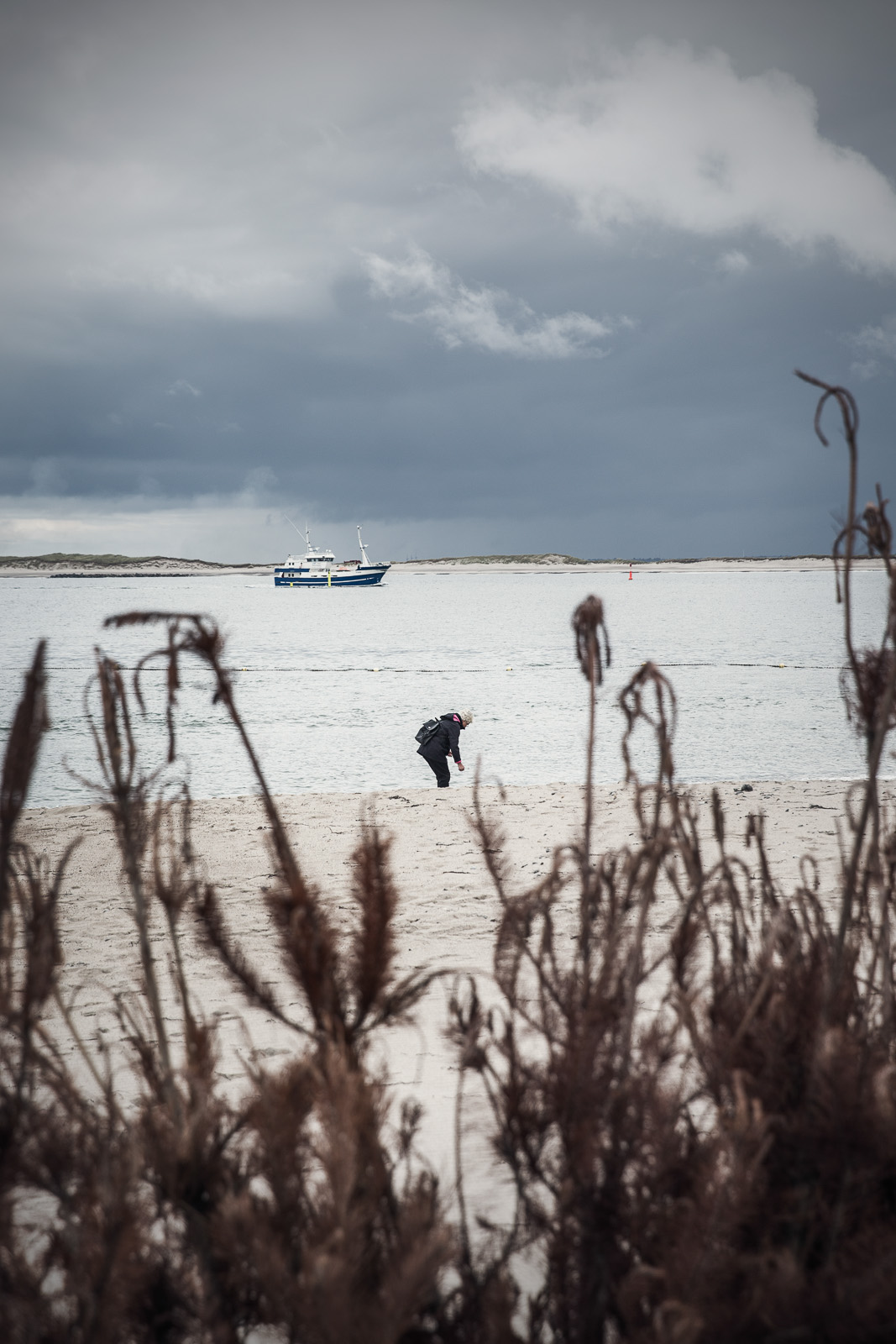
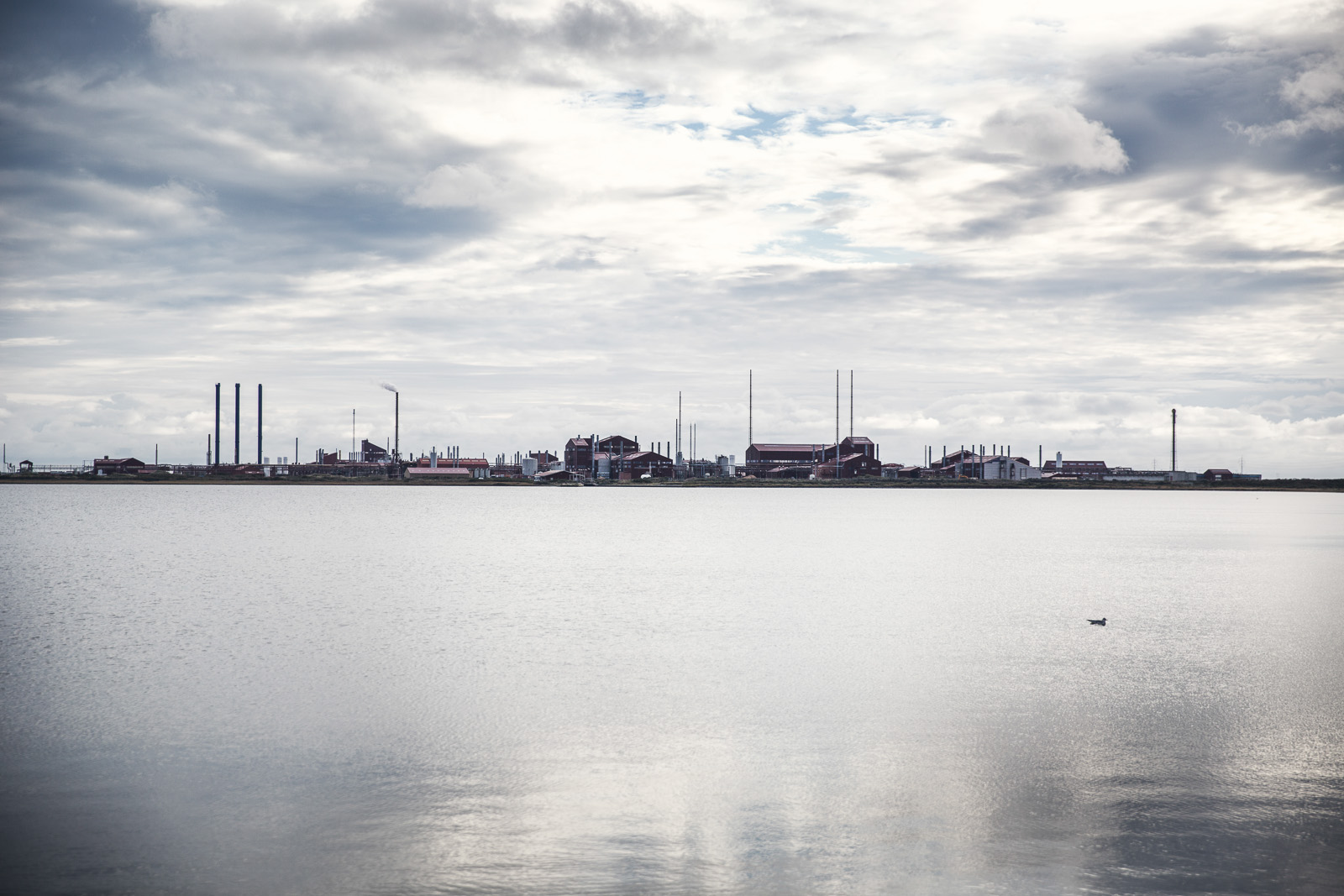
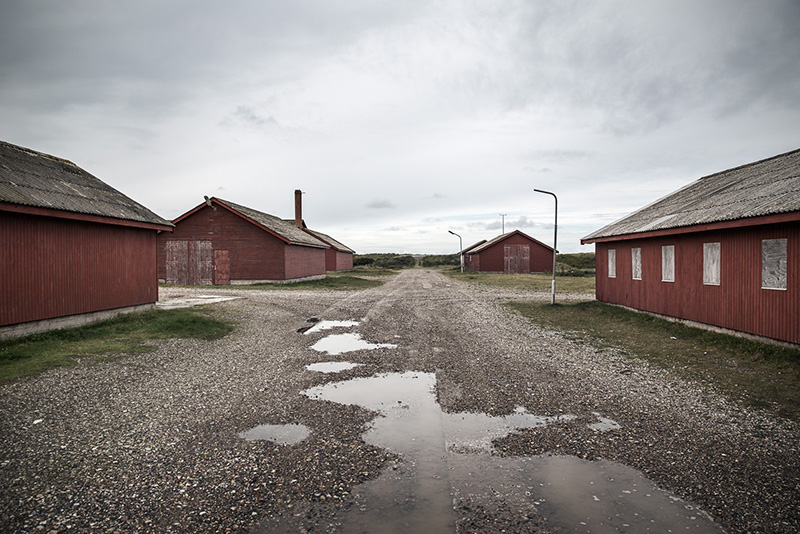
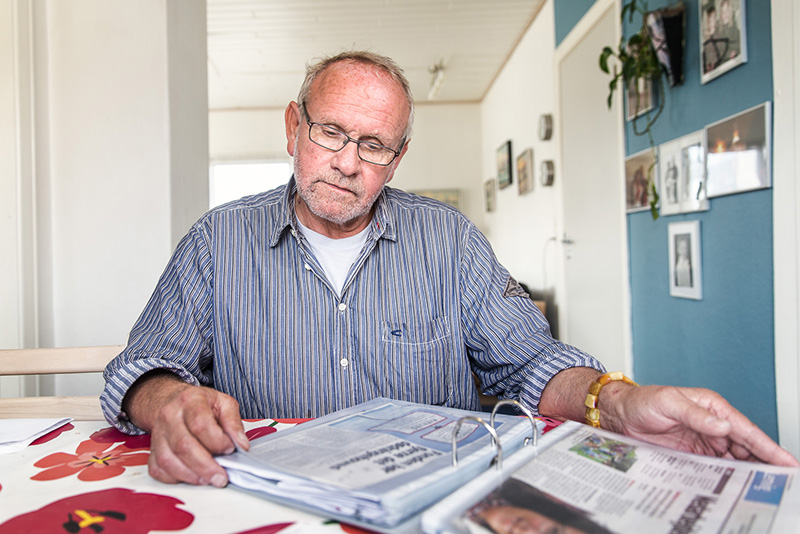
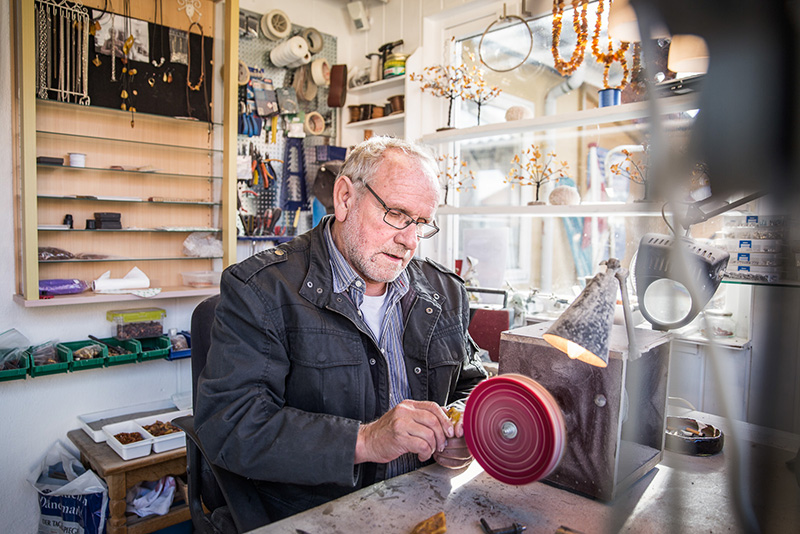

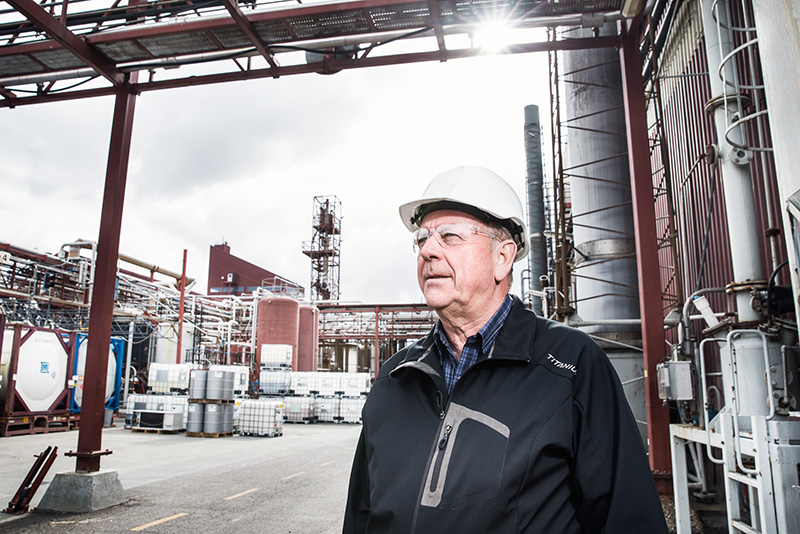
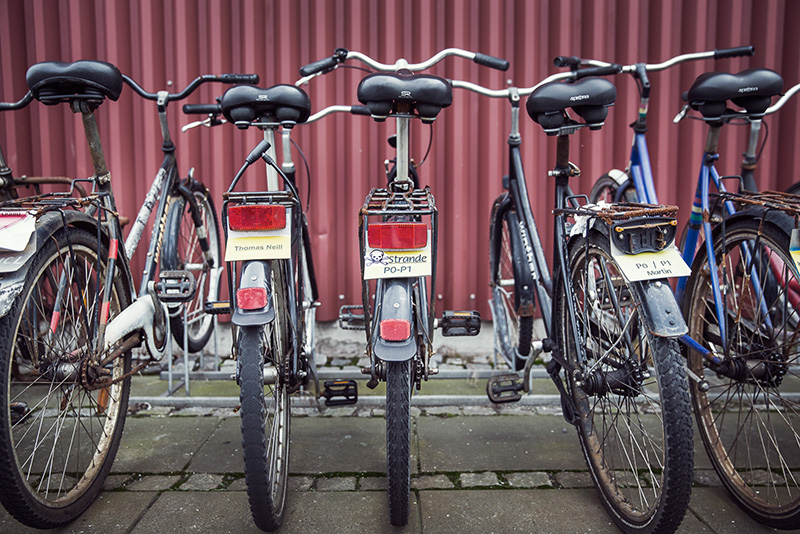
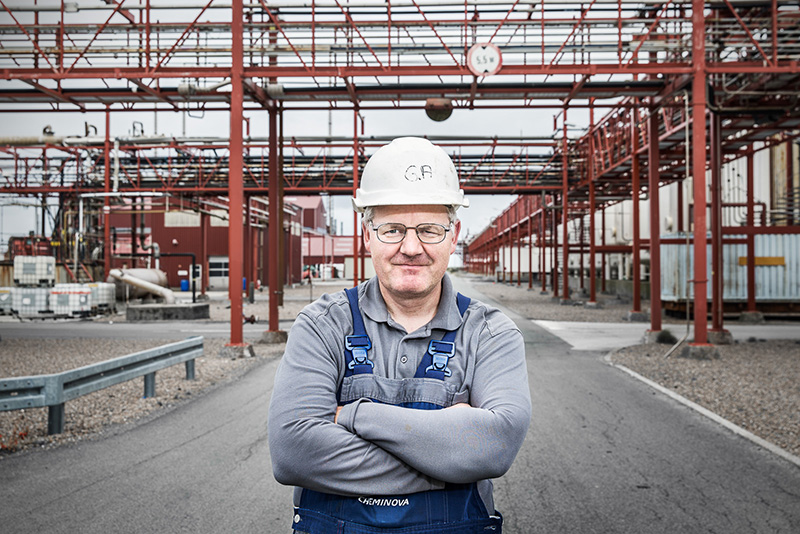
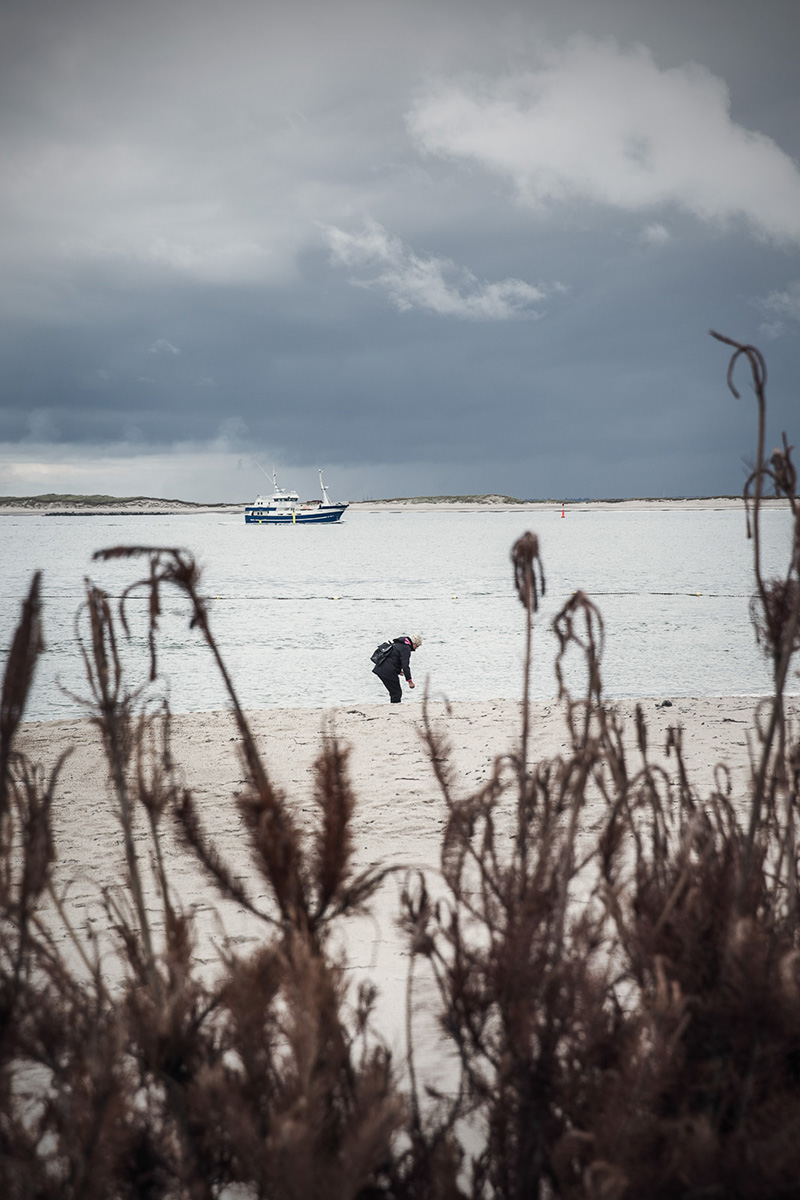
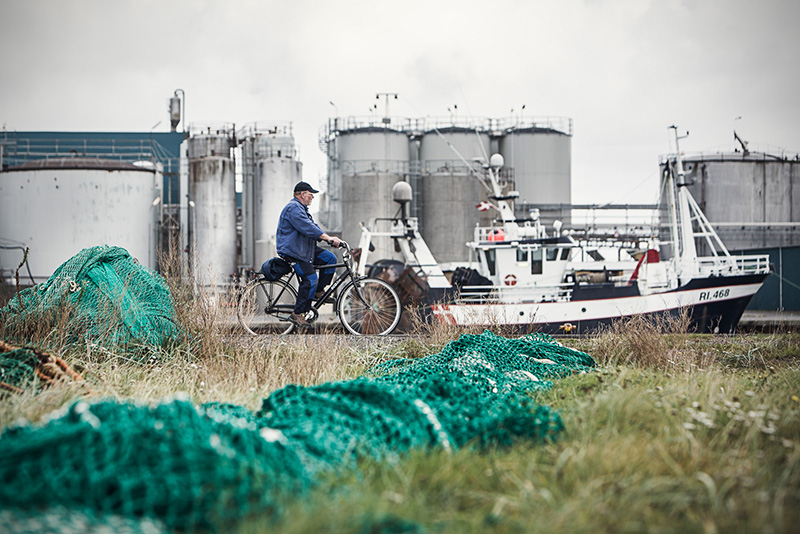


Joint union representative Gunnar Krarup Andersen picks up a book lying on the table in front of him in his office at the Cheminova chemical manufacturing plant located on the Rønland peninsula on Harboøre Tange. He quickly turns to page 65. Holding the page with his left index finger he begins reading:
"My intention with the foundation was just as clear: Would we invest – as I hoped to do – many years of work in a company only to risk one day seeing it pulled apart by speculators and/or bickering and maybe even useless heirs? Not me."
The first half
The book which Gunnar Krarup Andersen is holding in his hand is titled First Half and it contains the memoirs of the founder of Cheminova, civil engineer Gunnar Andreasen.
In 1944, civil engineer Gunnar Andersen donated the chemical manufacturing plant to Aarhus University. In connection with the donation, the university founded the Aarhus University Research Foundation (AUFF) with the objective of supporting scientific research at AU.
Safeguarding his life's work
Gunnar Krarup Andersen, who is joint union representative for approx. 500 of the 850 employees at Cheminova on Harboøre Tange, looks up from the book.
"What Gunnar Andreasen is talking about here, is safeguarding himself against speculators coming in and splitting up his life's work by giving it to Aarhus University."
The joint union representative continues reading that “the foundation has a charter that states that the shares can never be sold, pledged, etc." And that it is the civil engineer’s intention to "tie up all current and future shares in A/S Cheminova in a foundation with a confirmed charter – e.g. that the charter cannot be altered."
A storm is brewing
The tone has changed from moderate to fresh during Gunnar Krarup Andersen's reading and there is a storm brewing as he continues:
"This man, he cheated his children and his wife and anyone else he could get away with to safeguard this company, this region – and then what ends up happening is exactly the opposite of what he wanted."
"Nobody," he says while hitting the book hard with his hand, “takes the wishes of the owner into account. The only thing they take into account is Aarhus University and what’s best for them."
A bookcase full of ring binders
In his little house on Vesterhavsgade 5 in Thyborøn, electrician Bjarne Hansen fetches one of the ten ring binders from the bookcase in the living room, and places it in front of himself as he takes his place in the kitchen.
He has brewed a large pot of coffee before starting to talk about the battle that his father, Aage Hansen, had to fight to draw attention to the pollution which has since become known as one of the largest and worst soil contaminations ever seen in Denmark.
The toxic waste depot at Groyne 42
Between 1953 and 1962 Cheminova discharged sludge containing waste water into a sand hollow. And between 1957 and 1962 – with the permission of the authorities – the company deposited solid waste from their manufacture of pesticides in the sand dunes at Groyne 42, a breakwater in the North Sea lying no more than a stone’s throw from the chemical manufacturing plant on the Rønland peninsula.
Egg yoke-yellow North Sea
Bjarne Hansen's father, Aage Hansen – who later became known as Rav Aage (Amber Aage, ed.) due to his large collection of amber – was at that time earning his living as a fisherman in the Limfjord and the North Sea. He knew nothing about chemicals.
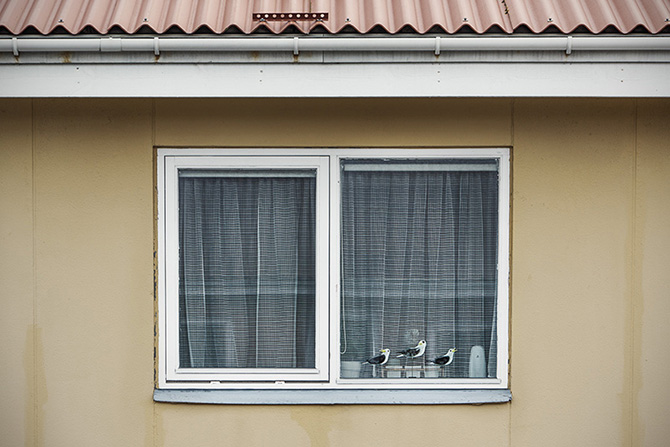
Bjarne Hansen today lives in the house at Vesterhavsgade 5 where he grew up in the fishing village of Thyborøn. Here he also runs the amber museum founded by his father. Bjarne Hansen is putting the finishing touches on an extension of the museum, which is visited by both locals and tourists. Photo: Anders Trærup.
But he had enough common sense to understand that he had to do something when, on his walks along the beach he noticed a terrible stench, and when at sea his fishing vessel sailed in water that was as yellow as an egg yoke.
Dead fish and birds
At the time, pollution was a foreign word and no one would listen to a fisherman who stood there with a dead fish in one hand and a dead bird in the other in an attempt to get others to understand that the birds and fish were dying as a result of pollution.
Rav Aage was dyslexic. But he would sit almost every evening and spell his way through papers that could provide him with documentation for what he knew in his gut was the destruction of the natural environment he loved.
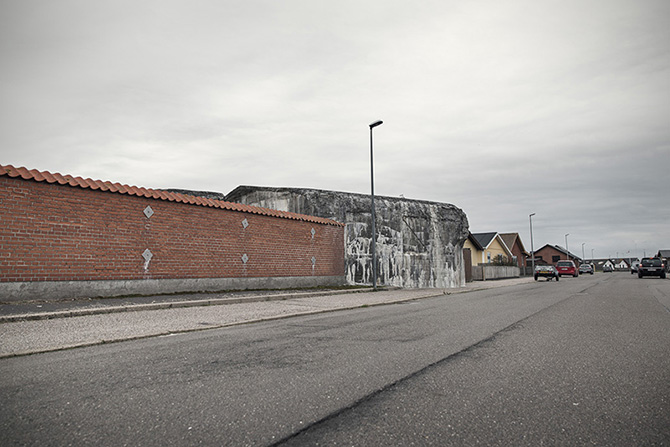
Many of the bunkers built by the Nazi’s during the Second World War remain in place despite the ravages of the rugged north-west Jutland nature. The solid concrete structures are in places the dominant elements, such as here in the middle of steel sheet pilling. Some people think they are ugly blocks of concrete, while others see them as pieces of cultural history that belong to the town, the sand dunes and the beach. Photo: Anders Trærup.
A wall of silence
For many years there was no help to be found. On the contrary. He could be met with silence when he tried to join a group of fishermen standing at the harbour to have a chat. Fishermen who were afraid that his talk of dead fish would harm their earnings. And the employees at Cheminova did not want to listen to a fisherman who talked about pollution caused by their workplace. While on the other coast of Jutland, AUFF kept a low profile.
1,250 cubic metres of contaminated sand
When the waterworks company accidentally excavated in the chemical waste depot at Groyne 42 in 1971, 1,250 cubic metres of sand mixed with chemical waste had to be transported and deposited on the Rønland peninsula. The chemical waste depot at the groyne was then covered with a concrete shield.
Dead birds were found on Harboøre Tange in 1978. Examination by the National Veterinary Serum Laboratory showed the birds had died from eating sand eels poisoned with parathion.
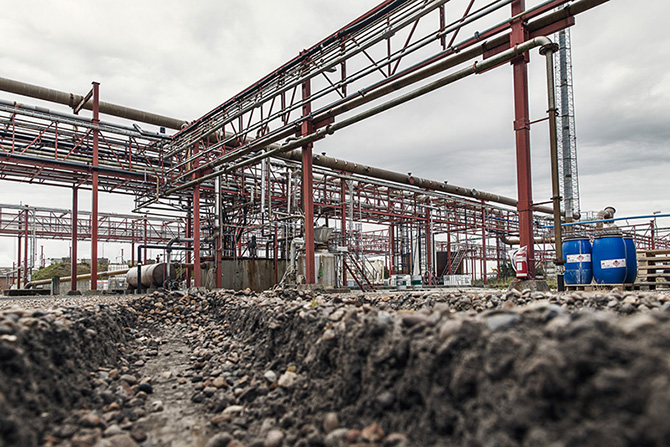
Cheminova currently has more than 2,200 employees. 850 of these work in Denmark. Photo: Anders Trærup.
26,000 barrels of chemicals
When a fierce storm three years later in 1981 laid bare the concrete shield covering the chemical waste depot, the authorities decided to remove most of the deposited chemical waste from Groyne 42.
5,600 tonnes of sand mixed with chemical waste was transported in 26,000 drums to a salt mine in Hesse in Germany. And the remainder of the chemical waste depot was covered over.
Ministry takes action
The Finance Committee of the Danish Folketinget (Denmark’s parliament, ed.) had granted the approx. DKK 22 million which the removal of the chemical waste would cost. They now recommended that Cheminova's liability should be tested in the courts as soon as possible.
In 1984, the Danish Ministry of the Environment and Energy brought an action against Cheminova. Almost three years later in 1987, the Western High Court delivered its verdict.
Cheminova acquitted
Cheminova was acquitted, partly on the grounds that the authorities had given their permission for the chemical manufacturing plant to deposit chemical waste at Groyne 42 between the late 1950s and early 1960s.
The verdict also attached importance to the fact that the Danish Ministry of Agriculture had itself deposited around 40 tonnes of pesticides in the depot in 1961. Following the verdict, the Minister for the Environment recommended that the case should not be appealed to the Danish Supreme Court.
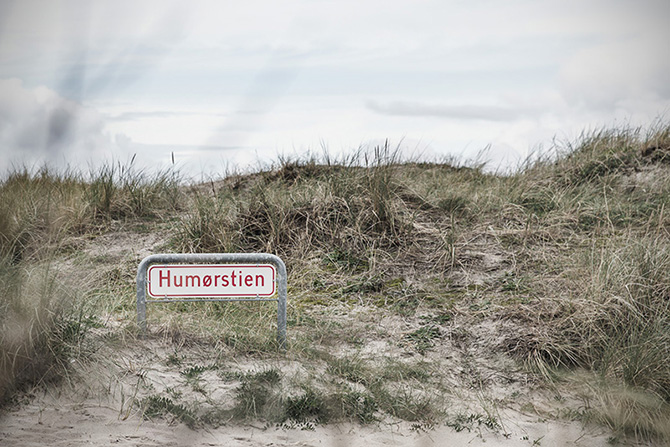
On the way to the beach in Thyborøn. Photo: Anders Trærup.
Responsibility of the authorities
Following this there were no more legal avenues open to the authorities in relation to Cheminova's time at Harboøre Tange. The authorities were responsible for the removal of the contamination at Groyne 42 and they would have to bear the cost.
Knight of the Order of the Dannebrog
Through the kitchen window of the house on Vesterhavsgade 5, Bjarne Hansen notices a middle-aged couple outside. When he gets up to go out and talk to them the photographer and journalist take the chance to look around his living room.
"I, the undersigned Chancellor of The Royal Order of Chivalry, hereby declare that it pleases Her Majesty the Queen upon the date of 24 July 1995, to appoint fisherman Aage Hansen as Knight of the Order of the Dannebrog."
That was what we read in the framed letter hanging on the wall next to the bookcase with the ten ring binders in the living room. The Queen knighted Rav Aage for his fight for the environment.
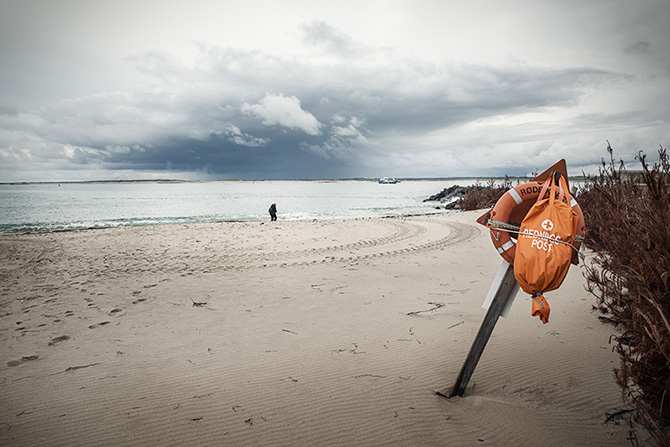
Thyborøn is a town in northern Jutland with 2,119 inhabitants (2014), located at the mouth of the Limfjord by the North Sea. It is located in the Central Denmark Region and is part of the municipality of Lemvig. The town has grown around the harbour port northward on Harboøre Tange besides Thyborøn Channel. The harbour was built between 1915 and 1918 and with more than 110 registered trawlers and fishing vessels with a total volume of approx. 15,000 GT (Gross Tonnage), it is one of Denmark's largest fishing ports. Source: Wikipedia. Photo: Anders Trærup.
"They found a big lump of amber weighing 38 grams that they wanted to sell," says Bjarne Hansen happily when he again takes his seat in front of the ring binder on the kitchen table after having said goodbye to the couple.
The Danish Parliament assigned responsibility
In 1996, the year after Rav Aage was knighted, the Danish Folketinget decided to place responsibility for the clean-up of contaminated sites on the counties of the time. This meant that responsibility for the clean-up after the contamination of Groyne 42 was placed on the former Ringkøbing County.
The smell of chemicals
An employee of the Danish Coastal Authority walked along the beach next to Groyne 42 on New Year's Eve Day of the year 2000. He could smell chemicals.
The authorities concluded that yet another storm had led to chemicals leaking from the depot at the groyne and out into the North Sea.
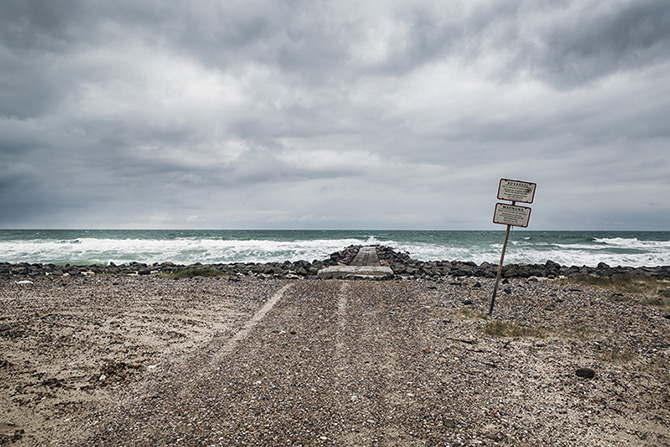
Nobody is certain how many tonnes of chemical waste is currently deposited in the toxic waste depot at Groyne 42. The most recent calculation was carried out as part of the NorthPestClean project between 2011 and 2013 in a collaboration between the Central Denmark Region and the Danish Environmental Protection Agency. They calculated that there are 110 tonnes of chemicals, including 68 tonnes of parathion, nine tonnes of methyl parathion and seven tonnes of mercury. The most contaminated area after the pollution from Cheminova is the area around Groyne 42. 20,000 square meters are here enclosed by a steel sheet piling wall which is designed to prevent further seepage of chemical waste into the North Sea. The steel sheet piling wall is guaranteed to do its job until 2019. Photo: Anders Trærup.
Then Danish minister for the environment, Hans Christian Schmidt, and then mayor Knud Munk Nielsen (both of the Danish political party Venstre (the Danish Liberal party, ed.)), agreed on a political solution after drawn-out legal wrangling. They would share the costs of a project with a budget of approx. DKK 24 million that would encapsulate the core of the chemical waste depot at Groyne 42 in a 600-metre steel sheet piling wall.
In 2003 a divided Ringkøbing County Council decided to initiate the project. The steel sheet piling wall was completed and in place three years later in 2006.
Rav Aage retires
The same year Rav Aage retired so he could live his final years in peace and quiet. Despite the knighthood and the letter from the Queen, he had not fulfilled his dream of seeing nature restored at Groyne 42, even though he had fought for more than 43 years to achieve this.
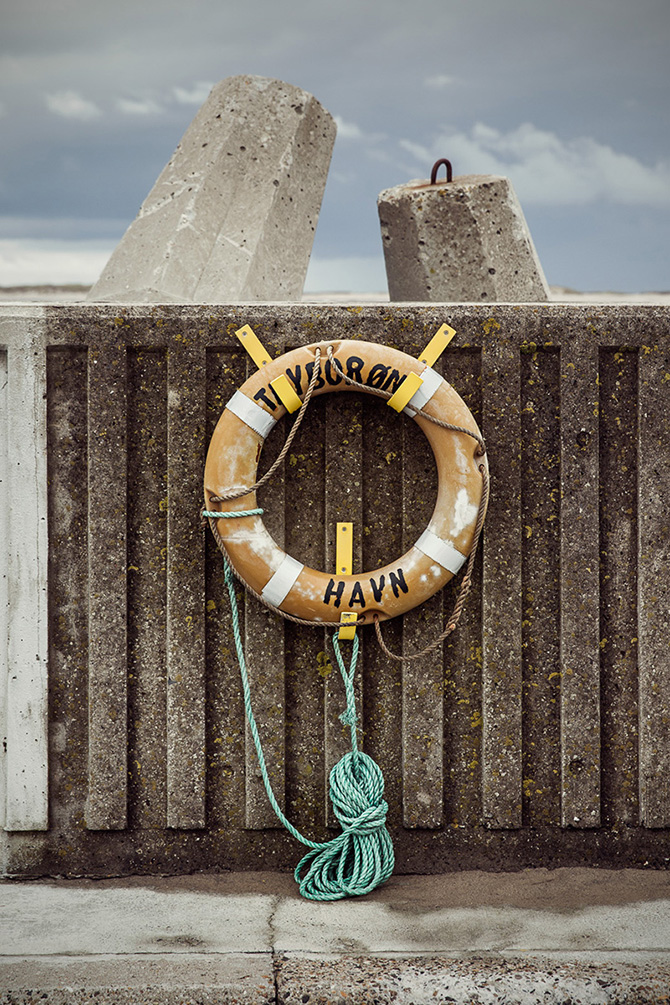
Some saves are vitally important. And some saves feel vitally important. Such as when the locals meet on the football pitch. Here is a summary published in the Danish sports newspaper Tipsbladet on 22 February 2013: "Far out in the west a historical and, for the people involved, all-important local derby regularly takes place. The matches have been called some of the most prestigious in Danish lower division football and whenever Harboøre IF and Thyborøn IF meet, further stories are added to a narrative that is already seventy-years-old about the two clubs that are placed side by side a little apart from the rest of the world." But here, too, there is still room for nuances. As in the case of joint union representative Gunnar Krarup Andersen, who lives in Harboøre. But who has a son who plays for Thyborøn IF. And is also a bit of a talent. The son that is Photo: Anders Trærup.
A son's promise
The ring binder on the table in Bjarne Hansen's kitchen is closed. He explains that he promised his father that he would not continue the fight during his lifetime. His father let it be understood that he would prefer if his son stayed out of the fight even after his own death. Rav Aage died in 2008 aged 83.
Since then, Bjarne Hansen has focused on the part of his father’s legacy to do with collecting, polishing and selling amber.
NorthPestClean
But even though he has kept out of the media spotlight, he has remained interested in developments during the period from 2011 to 2013, where the Central Denmark Region in collaboration with the Environmental Protection Agency has used the chemical waste depot at Groyne 42 as a test site for a method for cleaning contaminated land in a project called NorthPestClean. With a budget of DKK twelve million, the project is funded by DKK 3 million from the Central Denmark Region, DKK 3 million from the Danish Environmental Protection Agency, and DKK 6 million from the EU.
Politicians postpone the decision
During the spring Bjarne Hansen found out that even though the project was proving to be very promising, it did not look as if the politicians in the Regional Council in Central Denmark Region were willing to allocate between DKK 100 and 250 million to do something about the contamination at Groyne 42.
He therefore began to publicly express his disagreement in an attempt to influence the regional politicians who would be making a decision on the matter at a regional council meeting later in the year.
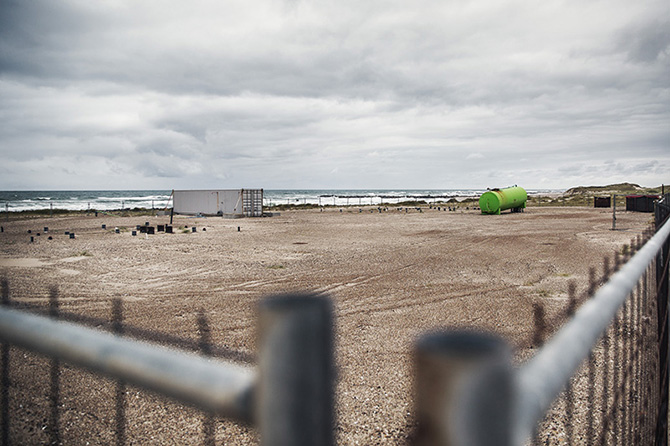
NorthPestClean is financed by the EU, the Danish Environmental Protection Agency and the Central Denmark Region. The aim of NorthPestClean is to document the efficiency of the in situ alkaline hydrolysis method with large scale experiments. The severe contamination at Groyne 42 makes it to an obvious site for the experiments which will be carried out in a number of test cells. The test cells are constructed by encapsulating heavily contaminated areas in steel sheet piling. The steel sheet piles are driven into the ground to a depth of 14 metres where they are anchored in a thick layer of clay. The sheet piles and the layer of clay ensure hydraulic control in the test cells. From northpestclean.dk. Photo: Anders Trærup.
On 20 August of this year the Regional Council adopted a motion to postpone a decision on the decontamination of the chemical waste depot at Groyne 42 until after 2019, at which time the Danish Regions and the Danish state must negotiate on a total financing of contaminated sites in Denmark.
"The Groyne 42 depot must be removed – now!” is the name of a Facebook page where Bjarne Hansen is continuing his fight against the regional politicians’ decision.
Until AUFF announced in September that it was going to sell Cheminova. For Bjarne Hansen that meant the start of a new fight which he fears could be a repetition of his father's battle.
Not legal documentation
In his office at Cheminova, joint union representative Gunnar Krarup Andersen leans forward to lay civil engineer Gunnar Andreasen's book First Half on the table.
"I know this book isn’t a legal document. But it is nevertheless from 1983 and he (Civil Engineer Gunnar Andreasen, ed.) would hardly have written it if it wasn’t true. I think it’s thought-provoking that it’s been so easy for the Danish Business Authority to give its approval for the research foundation to carry out the sale," says Gunnar Krarup Andersen.
As a commercial foundation AUFF must have the Danish Business Authority's consent to sell Cheminova. The Danish Business Authority gave its consent on 19 June 2014.
Taking the owner's wishes into account
"I might very well ask at the general meeting whether we as shareholders can be certain we are taking the owner's wishes into account if we vote for Auriga’s sale of Cheminova," says Gunnar Krarup Andersen.
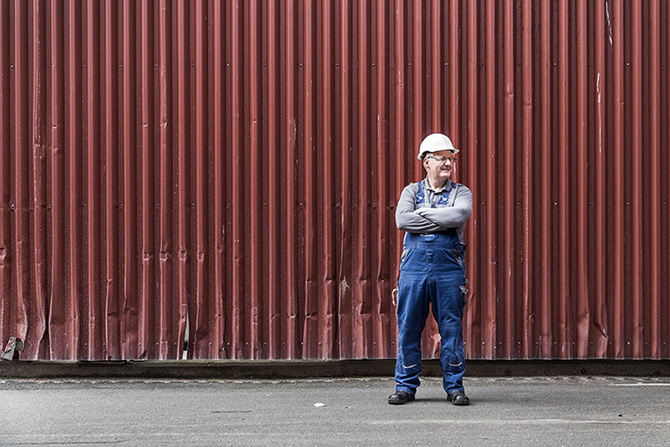
A search of krak.dk (online Danish address finder, ed.) reveals that Cheminova is much more than a workplace. Seven hits result from a search for the word "Cheminova." These are: 1. Cheminova A/S. 2. Cheminova Art Association. 3. Administrative staff association Cheminova. 4. 3F (United Federation of Danish Workers) Club Cheminova. 5. Cheminova Welfare Foundation. 6: EUREST A/S Cheminova. 7. Workshop Club Cheminova. Gunnar Krarup Andersen has worked for 20 years at the chemical factory. His brother retired after more than 30 years at the same workplace. In Harboøre the streets are named Insektvej (Insect Street) and Svampevej (Mushroom Street) in the part of the town that was quickly built for the increasing number of workers looking for work at the chemical factory when smoke began rising from the chimneys from 1953 on the Rønland peninsula. Photo. Anders Trærup.
Like many other employees at the chemical manufacturing plant he is a shareholder in the parent company Auriga Industries A/S, which owns all share capital in the Cheminova A/S subsidiary.
AUFF is the majority shareholder in Auriga Industries, whose share capital is divided into Class A and Class B shares. The foundation owns 38.5 per cent of all shares, including all Class A shares, which gives the research foundation 83 per cent of the voting rights among shareholders.
At an extraordinary general meeting on 7 October the shareholders had to decide on the sale of the chemical manufacturing plant. As AUFF had already announced on 8 September that it would be voting in favour of Auriga Industries' sale of Cheminova, the outcome of the vote was known in advance.
Gunnar Andreasen's foundation
Gunnar Krarup Andersen clearly thinks it is wrong of AUFF to sell Cheminova. But now the deal is done he thinks that AUFF is, at the very least, under a moral obligation to allow some of the approx. DKK 3.2 billion that the sale brings in for the research foundation to go to a local foundation to support business development in the area. According to the joint union representative, a suitable name would be Gunnar Andreasen's Foundation.
A few crumbs for the employees
He also thinks that the research foundation ought to say thanks for the many years of effort put in by the employees and give a few crumbs, as he puts it, back to the employees at Cheminova.
When asked to elaborate on what a few crumbs add up to in today’s money he says that the employees have, via the joint employee club and the salaried employees association at Cheminova, already suggested that the board of directors of AUFF should give three per cent of the net profit from the sale to the employees. He explains that this would be a thank you to all those who have helped to create the company’s value.
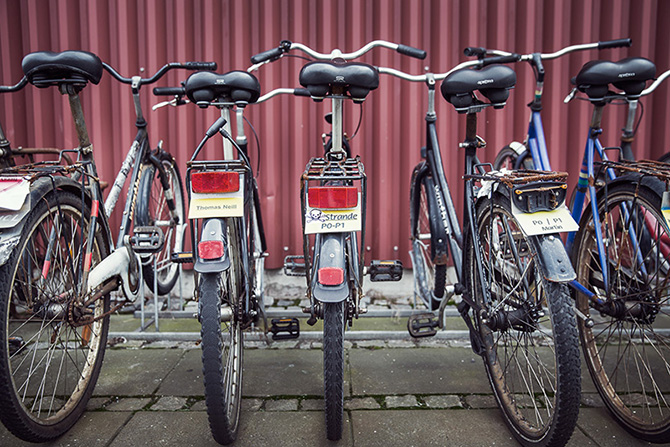
Bent Hansen’s name is also found on one of the signs on the bikes in the bicycle racks at Cheminova. Photo: Anders Trærup.
A no from AUFF
According to Gunnar Krarup Andersen, AUFF has replied that it cannot give funds to either a business foundation in Lemvig Municipality or to the employees at Cheminova on the grounds that the research foundation, in accordance with its charter, can only distribute money to support scientific research at Aarhus University.
Proud of working
But where there is a will there is a way for the research foundation, thinks the joint union representative. He stands up to fetch two safety helmets for the photographer and journalist before taking them on a tour of the chemical factory where he has always been proud of working and where he can celebrate his twentieth anniversary on 1 November.
For the benefit of society as a whole
On 3 September in an interview with the local newspaper Folkebladet Lemvig, chairman of the board of AUFF Rector Brian Bech Nielsen expressed the same position as the research foundation had previously, according to Gunnar Krarup Andersen, explained to the employees at Cheminova.
"The chairman maintains: No money from us." That was the headline in an article by local editor Lars Kamstrup, beneath which the approx. 2,700 subscribers of the local paper could read:
"Rector Brian Bech Nielsen, who is chairman of the research foundation, states that the Board of Directors must live up to the charter describing what the foundation must work towards.
"And that only offers the possibility of donating money to research activities at Aarhus University. If we do otherwise, it would be actionable’, says Brian Bech Nielsen, who points out that the research that takes place at the university benefits society as a whole."
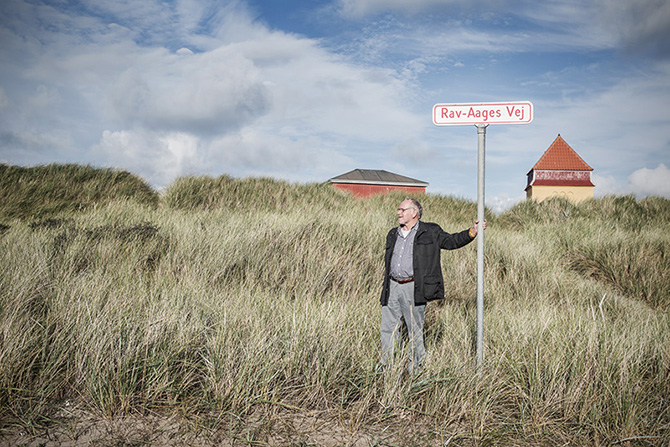
"You’re never a loser before you give up!" This is painted on one of the many signs besides Bjarne Hansen's house. Bjarne Hansen is here photographed at the small road in Thyborøn which is named after his father. The road is the one that Rav Aage took each day on his way to the sea. Photo: Anders Trærup.
Bjarne Hansen's dread
Bjarne Hansen takes a new ring binder from the bookshelves in the living room. This one is much thinner than the other one he’s been sitting with for a long time at the kitchen table in the house at Vesterhavsgade 5.
The new ring binder only contains a few cuttings of letters to the local paper in Lemvig.
Responsibility for cleaning up after the contamination of the area at Groyne 42 has been placed. And Bjarne Hansen will undoubtedly later resume the fight against the politicians in the Central Denmark Region.
A new fight
But right now there is a new battle to be fought. Having learned from his father's experience, Bjarne Hansen wants clarity about where responsibility for the clean-up lies following the contamination of Cheminova's factory area on the Rønland peninsula if FMC Corporation either moves or closes the chemical plant one day.
He finds his most recent letter to the editor from 23 September. In it he explains why he fears that AUFF's sale of Cheminova can lead to a repeat of his father's battle.
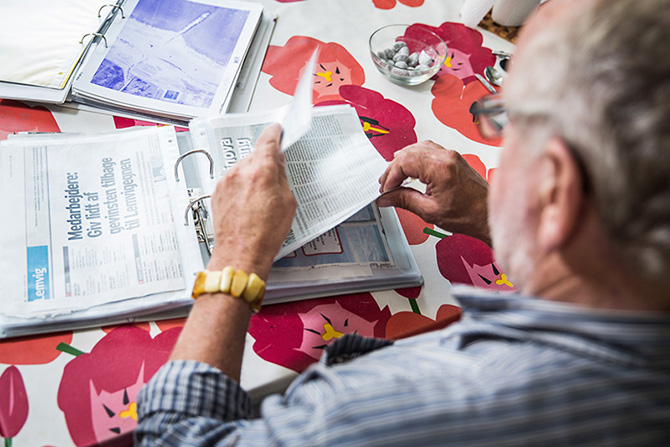
Bjarne Hansen at the kitchen table in his small, yellow house just a few hundred meters from the North Sea. Photo: Anders Trærup.
"Now you have heard me warning about the future of the depot at Groyne 42 for a long time. I suddenly change focus and start warning about the sale of the Cheminova chemical factory," begins Bjarne Hansen.
Where does the responsibility lie?
He goes on to write:
"As the transaction will be finalised on 7 October, finding out about this ownership is suddenly very urgent.
Will the buyer also take over the existing contamination? Is the buyer aware of the scope of the contamination? Has an agreement for the clean-up been entered into if/when the buyer at a later time decides to move/close the factory? Does the deal include the old factory site? If it does not, who is then responsible for it? So dear reader, that is why I change my focus, because it is extremely important that we get clarification, as we will otherwise be leaving this contamination to our descendants."
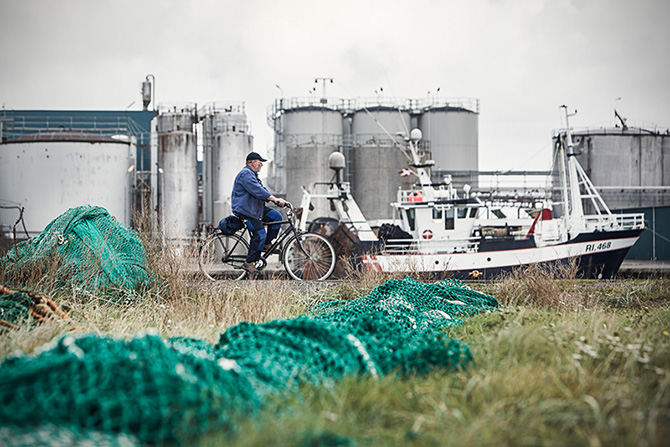
Thyborøn Harbour is the harbour in Denmark that lands the most plaice, due to the port's location near the best fishing grounds. The largest quantities are landed by the large trawlers, the majority of which are from Thyborøn. Photo: Anders Trærup.
Fakta
Cheminova fik total miljøgodkendelse i 1988
Cheminova etablerede i løbet af 1980’erne et stort biologisk rensningsanlæg, der markant nedbragte udledningen af især fosforholdige forbindelser i spildevandet. Desuden tog Cheminova et luftforbrændingsanlæg i brug i samme årti, og kemikaliefabrikken opnåede en total miljøgodkendelse efter dansk lovgivning i 1988.
Kilde: cheminova.com
Facts
Contents of the toxic waste depot at Groyne 42 as of 2014
Nobody is certain how many tonnes of chemical waste are currently deposited in the toxic waste depot at Groyne 42. The most recent calculation was carried out as part of the NorthPestClean project between 2011 and 2013 in a collaboration between the Central Denmark Region and the Danish Environmental Protection Agency.
| Parathion | 68 tonnes 62 % |
| Methyl parathion | 9 tonnes 9 % |
| Mercury | 7 tonnes 7 % |
| E-sulfotep | 6 tonnes 5 % |
| Malathion | 3 tonnes 3 % |
| Other substances | 16 tonnes 14 % |
| total | 110 tonnes 100 % |
| Source: | NorthPestClean |
Aktionærerne får del i provenuet efter salget i begyndelsen af 2015
Bestyrelsen i Auriga Industries A/S forventer, at salget af Cheminova A/S til amerikanske FMC Corporation er gennemført i begyndelsen af 2015. Aktionærerne i Auriga kan snarest derefter se frem til at få udbetalt provenu. Auriga vil derefter blive afnoteret fra Københavns Fondsbørs. Og lukket.
Kilde: Selskabsmeddelelse fra Auriga Industries A/S
Translated by Peter Lambourne

